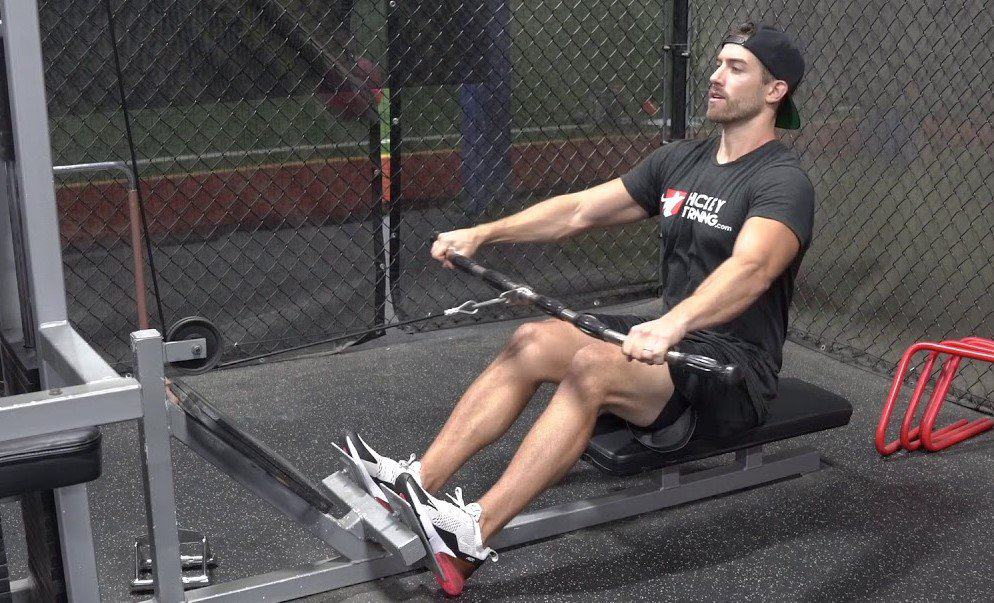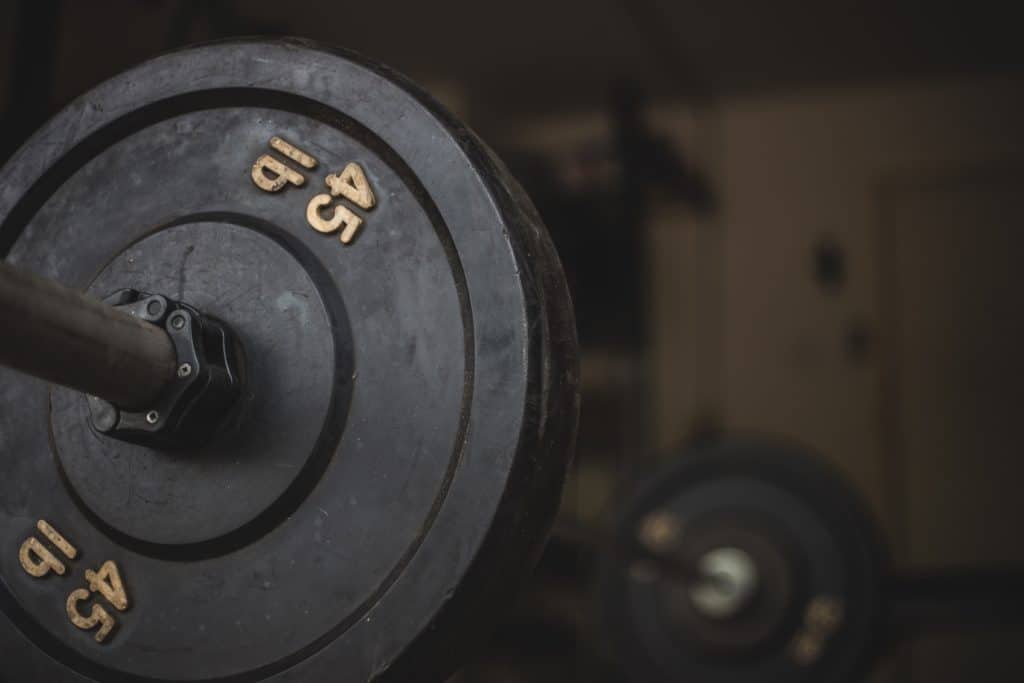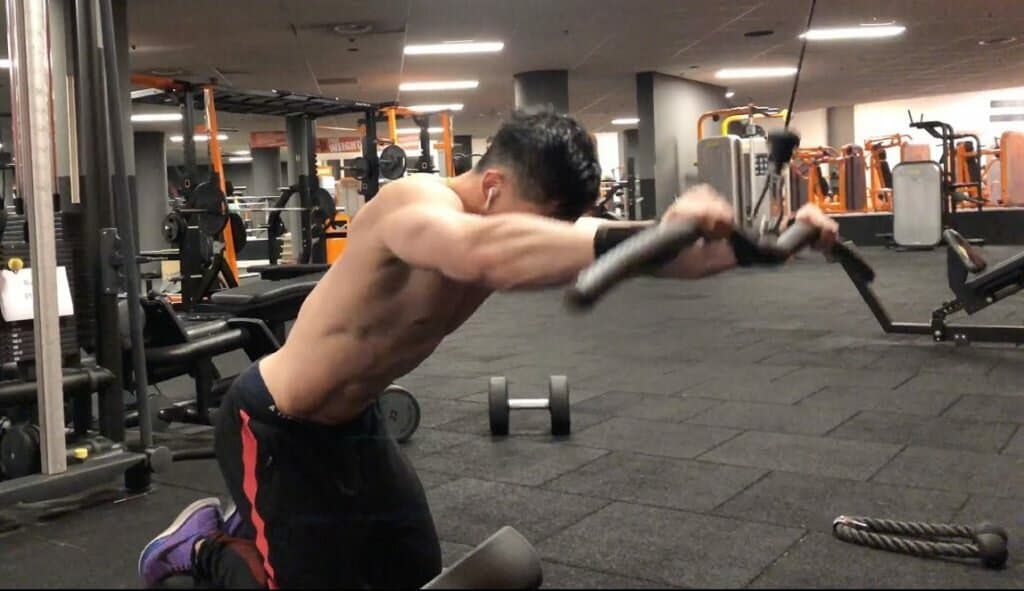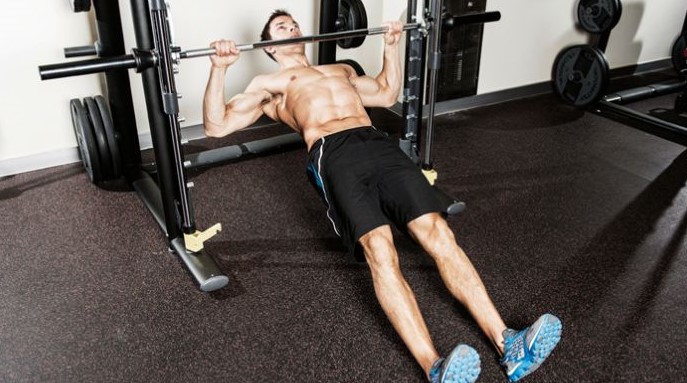
Lat development is one of the most common issues when it comes to building muscle, even among the most seasoned lifters that frequent the gym. They do all the pull-ups and lat pulldowns in the world yet don’t see the results they desire.
There is a famous saying in bodybuilding that shows are won from the back. The ability to display wide lats, massive traps, and deeply etched spinal erectors makes for an impressive physique.
While symmetry among all muscle groups is important, back muscles are often overlooked for the simple fact that you can’t usually see them. It’s easy to look at your chest or biceps in the mirror, but getting a glimpse of your back requires some twisting, mirror manipulation, or someone to take a picture.
The collection of back muscles is truly the foundation of any good physique. You won’t find any famous and successful bodybuilder that didn’t have a jaw dropping back double bicep pose where their lats just pop out. Even if you have no aspirations to set foot on stage and just want to build a physique for yourself, having a wide back that resemble wings is a must.
Properly engaging the lat muscles takes practice. But it’s also important not to be stubborn. Just because conventional wisdom says you have to do a certain exercise to develop a wide back doesn’t mean it’s true. There are many paths to a great physique.
The fundamental exercises that most people are familiar with, no matter the muscle group, are a good foundation to any workout routine. But if you find yourself struggling to bring up a lagging body part, it’s time to change.
Recruiting all the muscle fibers in the lats usually comes down to posture. Too often people will roll the shoulders over, creating a curve in the back. When that occurs, the muscle tension leaves the back and moves to the front delts or biceps. If there is one thing to take from this article, it is that posture is everything when developing the lat muscles.
The exercises below are atypical in terms of the usual back workout, which usually features barbell rows, shrugs, and pull-ups. Those are great exercises, and should still be a part of any routine. But for anyone looking to go out of their way to make their lats thicker and wider, you’ll have to be more creative.
In some cases these exercises are completely different than the norm, while in others they are a variation of a standard movement.
1. Slow Tempo Assisted Pull-ups
Many people bypass the assisted pull-up machine due to ego, but it’s one of the best ways to isolate the lats if used properly.
When performing conventional pull-ups, it’s common to swing and use some momentum, even if you go out of your way to minimize it. As a result the muscular tension may shift to the biceps, shoulders, or different parts of the back.
With the assisted pull-up machine this is less of a concern. You are not hanging freely from a bar; the body is supported by a pad under the knees.
With this newfound bodily control, we can shift our attention to maximizing muscular tension in the lats. This is achieved by puffing the chest out to help maintain posture while keep a slight arch in the back. To compound this further, we are going to slow the tempo of the exercise.
To truly isolate the lats, perform the assisted pull-ups slowly, counting to 4 seconds on the way up and 4 seconds on the way down.
Due to the slow tempo, a common rep range for this exercise is 4-8 reps. It may seem low, but the time under tension will be massive. You could even pause at the top for additional muscular contraction.
Try to perform this exercise utilizing about 30% of your weight as assistance. For a 200lb individual, this would mean sticking the pin in the slot labeled 60lbs, or whatever is closest to it.
Remember that the assisted pull-up machine is the opposite of every other machine at the gym; the bigger the stack the more help you get, thus making it easier.
An important consideration when structuring a workout program is the stimulus to fatigue ratio of an exercise. Ideally you want exercises that stimulate the muscles but aren’t so fatiguing that they negatively affect the rest of the workout.
Of course, working out is fatiguing in general, but there are varying levels, hence this stimulus to fatigue ratio. At the very least you want to put the highly fatiguing exercises at the end, when there is no need to conserve energy.
The slow tempo assisted pull-up is a strenuous movement and should be placed towards the end of the workout. You may notice that your grip begins to experience muscle fatigue first. Since the purpose of the exercise is to build lats and not forearm strength, you can use straps to mitigate that fatigue.
2. Wide Grip Seated Row
The cable row is not an unusual exercise by any means, but many people use the same attachment each time. The most common attachment is the neutral, narrow grip metal bar.
Conceivably you could use any attachment that is used for the cable pulley machines and perform a rowing movement. Some are more natural than others, but too often people rely on a narrow grip.
The narrow grip attachment can leave the motion too tight and restrictive. If you’re having issue engaging the lats with the neutral grip attachment, you can opt for something wider.
The simplest solution is to use the lat pulldown bar and take a wide, overhand grip to perform the seated row.
While this may shorten the overall range of motion, the hand placement would allow for better lat engagement and thus improved muscle development of that area. Don’t be afraid to lean forward and get a good stretch on each rep. Just remember to keep the chest high and maintain posture during the contraction.

3. Pendlay Row
The pendlay row is often confused with the standard barbell row, but the body positioning is slightly different.
On the pendlay row, the back is parallel with the ground and the entire body is positioned like a right angle, or upside down L. This body orientation is challenging to maintain without weight to begin with, so most people won’t be able to go as heavy as with a typical barbell row.
During the movement you maintain this position the whole time; you never lift your upper body. It’s advised that you practice maintaining posture in all rowing movements before trying this one.
This unique stance for the pendlay row allows for excellent lat muscle engagement if performed properly. There are instances where I’ve only used the standard 45lb barbell and experienced a massive back pump from this exercise.
People who are particularly adept at this exercise and are able to add plates may want to stand on a small stepper to increase range of motion.

4. Lat Prayer
The lat prayer is performed on the cable pulley machine, with the attachment placed on the highest rung to maximize the stretch. The straight bar, EZ bar cable attachment or ropes can be used for this exercise.
As a trainer, this is one of the harder exercises to teach. The movement sort of looks like a tricep extension, but the arm remains relatively straight the entire time. The ironic thing is that you may experience a bit of tricep engagement and think you’re doing it wrong, but this is normal.
The best tip is to accentuate the arching of the back, to the point that it may look awkward or unnatural. Stand far enough from the pulley so that you can fully extend the arms and get a proper stretch. If performed properly, you won’t need much weight. Some people even kneel on the ground to get a better stretch.
Due to the long range of motion, this is a great exercise to start a back workout. It isn’t particularly fatiguing and will loosen up the lat muscles for heavier movements later in the workout.

5. Rack Chin-ups
A seemingly easy exercise on the surface, rack chin-ups add up quickly. Similar to the lat prayer, this bodyweight exercise is great to use as a warm up or as a burnout finishing movement.
Rack chin-ups can be performed using a barbell in a power rack or on the smith machine, basically any place you can secure a barbell to support your weight. The user starts on the floor utilizing an overhand grip on the bar, slightly wider than shoulder width. From there they pull their body up, with the chest approaching the bar itself.
Aside from adding a weighted vest, there is no real way to increase resistance, so the rep ranges for this exercise will be higher than the typical back movements. The one alternative would be to elevate and place feet on a step or bench so that you have to absorb more of your own body weight.
Recent Posts
Many experienced lifters will tell you that the deadlift is a necessity to build a wide, muscular back. Deadlifts, squats, and bench press are considered the holy grail of exercises. These...
Bulking is a dieting phase where an individual increases their calorie consumption in an attempt to gain weight, ideally in the form of lean muscle tissue. A proper bulking phase revolves around a...
